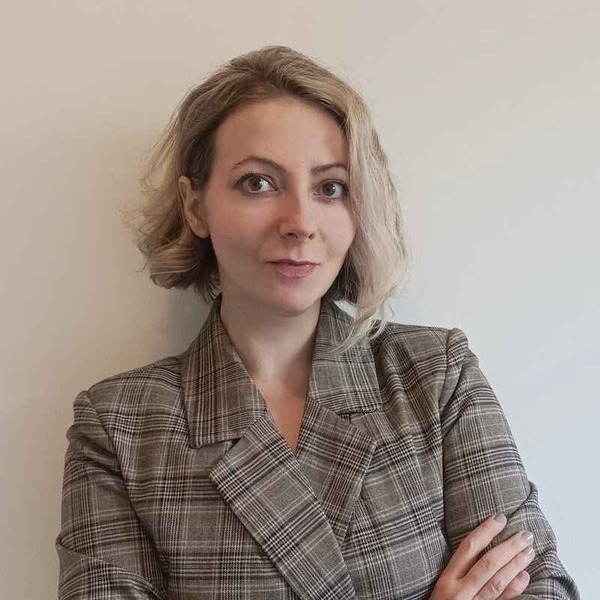Does your company regularly order lunch using a delivery service? Do you cooperate with external services for equipment maintenance?
If so, that means you are using a third party, and these are just a couple of examples of a third party in business.
Most successful companies rely on various third party services to ease their workload and expedite the whole business process.
If you’re curious to know what exactly a third party is and how to communicate with them, you’re in the right place.
Aside from that, in this blog post, we’ll cover:
- Types of third parties and third party examples in business,
- The benefits and risks of using a third party, and
- Challenges of communicating and collaborating with the third party.
We’ve also included some templates that’ll help you communicate more effectively and collaborate easily with your outside partners and associates.
When you reach the end of this text, you’ll have a better grasp on how to use third parties.
Without further ado, let’s dive in!

Quick access to free templates for third-party communication and collaboration:
🔽 Download Goals and Expectations Questionnaire
🔽 Download Follow-up Feedback Sheet
🔽 Download Survey: Effective Communication With Third Parties
Table of Contents
What is a third party?
A third party in business is any individual or organization that provides services or products to an organization or its customers on behalf of the organization. In other words, a third party can be defined as any entity or individual that a company does business with.
Overall, a third-party relationship can be defined as a contract-based relation between a company/enterprise and the individual/company that provides specific services/products to the said company/enterprise.
While it’s important to respect each partner’s unique desires and fulfill their requests, a company has to have a standardized policy on third-party relationships. This can be tweaked in a way to fit each partner individually without affecting the company’s general policy.
As there are different types of third parties in business, it’s important to name a few.
Types of third parties in business
Third parties in business include vendors, contractors, suppliers, business associates, distributors, resellers, etc.
We can make a distinction between the following types of third parties in business:
- Contractors,
- Freelancers,
- Vendors,
- DCOs or data centers outsourcing,
- Consultants, and
- Customers or clients.
Let’s take a closer look at each group individually.
Type #1: Contractors
A contractor is an independent, self-employed entity or individual that supplies companies and businesses with goods, services, materials, equipment, or even personnel.
Although contractors might work for another company, they aren’t considered company employees. In most cases, contractors work according to a contractor agreement. This agreement outlines what services, products, and materials the contractor will provide to the company, the cost of the deal, as well as any warranties.
In line with that, a contractor can be:
- A company overseeing construction sites,
- A software company, or
- A company coordinating projects, such as evaluating documents or determining sites for renovations.
Type #2: Freelancers
Although some people consider “contractors” and “freelancers” to be the same, we shouldn’t use these terms interchangeably.
A freelancer is a professional who provides services from their field of expertise to more than one client. Freelancers usually don’t have permanent clients or contracts and work on a per-job or per-task basis.
Since they engage in short-term projects, they are much more flexible than contractors and company employees. Freelancers tend to work in the following sectors:
- Film, acting, or music,
- Journalism, editing, copywriting, and proofreading,
- Website and software development and computer programming,
- Media and marketing,
- Video editing and production,
- Art, design, and illustration,
- Tourism, event planning, photography, and catering, or
- Consulting, tutoring, and language translation.
Type #3: Vendors
A vendor or a supplier is a person or a company that makes goods and services available to other companies and organizations. In that sense, vendors can play a crucial role in the business supply chain.
For example, the HR department in a large business is planning a New Year’s Eve party for their employees. To be able to do that, they will have to hire an outside company (or more than one) to take care of different parts of the event. These might include:
- The owner of the location where the party will be organized,
- A decorating company to take care of party decorations, and
- A catering business to provide the food.
Each of these would be treated as a separate vendor/supplier of specific products or services.
Type #4: DCO or Data center outsourcing
According to Gartner’s glossary of Information technology, DCO (Data Center Outsourcing) is “a multiyear, annuity contract or relationship involving the day-to-day management responsibility for operating server or host platforms, including distributed servers and storage.”
These services may cover the following:
- System management,
- Managed hosting,
- Managed storage,
- Application performance monitoring, and
- Database administration.
Type #5: Consultants
As experts on a certain subject matter or field, consultants are usually individuals or agencies that provide their clients, other individuals and companies, with professional advice in their respective areas of expertise.
In essence, a consultant’s job is to provide companies and organizations with:
- Expert advice,
- Recommendations,
- Analysis, and
- Opinions aimed at solving company issues or improving overall performance.
Type #6: Customers
Last but not least, customers are an essential part of most businesses. They are individuals or companies that usually buy another company’s product or service and, in that way, drive revenue. Without customers, businesses wouldn’t exist.
A business’ success is reflected in the number of customers it has — the more, the merrier. Thanks to their customers’ input, most businesses are able to better understand their needs and find ways to improve their services or products.
Third party examples in business
To make the matters even clearer, let’s look at a few examples of third parties in business.
Example #1: Real estate escrow company
Real estate escrow companies are a perfect example of third parties in business, in this case, in a real estate transaction. Namely, they are a neutral agent that collects documents and money for both the buyer and seller. Aside from that, they hold deeds and funds needed to complete the transaction.
Naturally, the exact process differs from case to case, but, upon all requirements being met, the escrow company delivers the documents and funds to the appropriate parties. After that, the escrow is closed.
Example #2: Collection agency
Another example of a third party is a collection agency. They are usually hired when a debtor hasn’t been making payments to the creditor on time. Then, a collection agency’s job is to ensure the debtor honors the agreement and pays the creditor.
This way, creditors avoid filing a lawsuit against the debtor and going to court.
Example #3: Delivery service
Many types of businesses use delivery services, which are another example of a third party. Whether they deliver food, documents, or goods, they are essential for companies that want to streamline their workflow.
Example #4: Employment agencies
When businesses need help finding qualified job applicants, they may turn to employment agencies. These third party businesses then connect them with aspiring candidates suited for the job in question.
Example #5: Payment processors
Companies for payment processing are examples of third party businesses that facilitate card payments between businesses and customers.
They make sure the very process of payment is as easy and quick as possible.
Example #6: Equipment maintenance
Finally, companies that maintain your equipment or manage your network security are also examples of a third party in business.
Their job is to remove all the technical obstacles that stand in the way of your productivity.
The benefits of using a third party in business
Now that we have seen some of the examples of third parties in business, it’s high time we considered what the benefits of using third parties are.
Benefit #1: Using a third party saves you time
Learning a new skill or hiring a new person takes time — a commodity we all seem to lack nowadays.
That’s why it pays off to hire a third party to save time and streamline your business, whatever it may be.
Benefit #2: Using a third party saves you money
Inextricably linked to time-saving is money-saving.
Let’s say your company needs a lawyer. It’s certainly much less expensive to hire them when the need occurs than to keep them on a retainer.
Benefit #3: Using a third party eases your workload
Hiring a third party to take some of the work off of your shoulders can be a real blessing. You won’t have to worry about overseeing everyone and making sure the work is done.
In other words, using a third party allows you to focus on your job.
Benefit #4: Using a third party provides you with valuable expertise
Developing a team of experts takes time. That’s all well and good when you know you’ll need the said in-house experts — it eventually pays off.
However, when time is of the essence, hiring a third party for a specific job will bring good results more quickly than developing a whole new team for the purpose. A third party will provide you with valuable expertise in no time.
Our contributor, Shannon Powers, Chief Strategy Officer, SVP at kglobal, highlights that third parties generally have expertise that the primary parties lack:

“They can facilitate aspects of a project in which they have expertise so the primary parties can focus on their core competencies. This results in efficiency for all.”
Benefit #5: Using a third party helps you build your reputation
Last but not least, using a reputable third party positively affects your own brand and reputation.
This, in turn, can help you grow your business and attract customers, as working with a respectable company increases your chances of being recognized as an equally esteemed business.
The risks of using a third party in business
Now that we’ve covered some of the main benefits of using a third party in business, let’s see the other side of the medal — what the risks are.
Risk #1: Using a third party leads to loss of control
Sadly, outsourcing a task means giving up some degree of control.
Although this can allow you to focus on your core business, it can also put you at risk if the third party doesn’t deliver as promised. That is why it’s important to wisely choose a reputable third party whom you can trust.
Risk #2: Using a third party can generate privacy concerns
Hand in hand with losing control comes privacy concerns.
Namely, if a third party you’re collaborating with requires sensitive information — financial or personal, such as your bank account or a social security number — this may render your private data vulnerable in case of a data breach.
Risk #3: Using a third party can create dependency
Another risk involved with using a third party is developing a potential dependency. You might begin to rely too heavily on a third party, to the point where it becomes damaging to your business. For instance, you may put too much trust and responsibilities in them, which can sometimes be more than they can chew.
Later on, if something goes wrong, it can be difficult to break this connection. However, this is why you should have a backup plan ready, just in case.
Risk #4: Using a third party may harm your business standards
Following the company’s standards and principles is not so hard when all employees are familiar with them, as well as with the risks of not complying with them.
However, when a third party gets involved, these standards may be endangered, as Shannon Powers points out:

“It’s important to vet third parties carefully and understand their service terms. One potential risk is inadvertently agreeing to something your primary client or member would not like, such as data sharing. There is also a risk that the third party does not abide by the same business principles or standards as you do, which can reflect poorly on you. If you introduce a third party to the business process, you are ultimately responsible for them.”
In other words, before doing any business with a third party, make sure you get them acquainted with the company’s set of rules and regulations.
Risk #5: Using a third party makes your company’s operations more complex
Lastly, using a third party inevitably convolutes your business operations. The trouble is, you need to coordinate everything you do with another company.
To minimize the chances of making mistakes, pay special attention to communication with a third party.
In line with that, let’s consider why communication and collaboration with third parties is relevant for the success of your business.
Why is communication and collaboration with third parties important?
The way your company communicates with third parties will impact your reputation and affect how others see your entire business. This is why paying extra attention to your third-party policy and the basics of communication with external partners is paramount for ensuring long-term business success.
No matter what type of third-party relationship we’re talking about, the rules for fostering effective communication and collaboration remain the same:
- Having a clear understanding of what third-party relations involve,
- Coming up with effective third-party guidelines,
- Educating your workforce about acceptable words and phrases in business settings, and
- Keeping things as transparent as possible.
However, the sun doesn’t always shine in the third-party business world. Quite often, actually, workplace failure is considered to be the main consequence of ineffective communication and collaboration — about 86% of employees and executives believe this is true.
If internal communication suffers, external communication suffers by default.
In other words, if your interaction with third parties isn’t functioning properly, your entire business will feel the consequences.
This is why it’s important to recognize the common challenges that might arise between a company and its outside partners.
5 Common challenges of communicating and collaborating with third parties
Most business owners, HR managers, and higher-level employees are well aware of how hard it can be to establish clear communication with contractors, freelancers, or vendors and how much this can affect further collaboration.
Overcoming communication barriers is an integral part of any business, especially today, when a great deal of communication is done over the Internet, telephone, and other means of communication.
To help you understand how communication and collaboration between companies and their external associates can go wrong, we’ll list some of the most relevant ones and try to explain these thoroughly.
Challenge #1: Misinterpreted goals
The early stage of communication with a third party represents a critical point in the whole communication and collaboration process. The mere basis here is setting up clear goals and expectations. They should be a constant reference point.
Sometimes, miscommunication can occur even at the beginning of cooperation, when one of the sides involved in a project or business agreement misinterprets goals or expectations set by another party. This can prove detrimental to the project’s success and could lead to contract termination.
Example of misinterpreted goals
A SaaS company, Software Digital, hires Adventureomatic, a team-building company, to organize their team-building event — but, they don’t provide clear requirements.
Based on the information they were provided with, Adventureomatic organizes a Zipline adventure without getting approval from Software Digital. On the day of the team-building event, Software Digital’s employees appear at the location, expecting to have a relaxing time. Instead, many immediately give up and go home.
The team-building event is a failure, because Software Digital failed to specify what they wanted and Adventureomatic failed to ask for approval before going through with the event.
Challenge #2: Broken communication
Broken communication is a loose term that covers a wide range of things — from missed emails, over unread messages, to inappropriate jokes.
Communicating with freelancers, suppliers, or customers can be even more specific because they can come with their own assumptions about what effective communication and collaboration should be like.
Although it might seem that damaged communication with a third party can easily be repaired, the consequences could be far deeper than you think, some of them being:
- Lack of trust,
- Low productivity, and
- Bad performance.
Sometimes, even an unintentional mistake or action can lead to a communication breakdown.
Example of broken communication
A natural beauty products company, Charm Infinity, is trying to make a breakthrough in the beauty industry. They hire Penelope, a freelance social media manager, to lead their social media campaign.
Penelope sends her proposal for approval to Charm Infinity, yet no one responds because, unbeknownst to her, the email ended up in the Spam folder.
Believing she didn’t contact them, Charm Infinity now thinks Penelope is unreliable and not suitable for the job.
On the other hand, Penelope thinks Charm Infinity isn’t serious enough to be her client.
No side makes an effort to examine the steps that led to this situation and the whole project fails.
Challenge #3: Missed deadlines
Another aggravating challenge that might occur in communication and collaboration with contractors, consultants, or other partners is missing deadlines.
Having a busy schedule can sometimes lead to project overlapping or simply forgetting about project deadlines.
Although there are many reasons for missing deadlines, one thing is certain — in the world of business, this brings about a series of unfavorable events that can lead to ruin and communication breakdown.
While there’s no way to predict unforeseen events, planning each project to the tiniest detail might help avoid breaking deadlines. The value of meeting deadlines in business can’t be emphasized enough.
Example of a missed deadline
Bryan, an experienced graphic designer, has been hired by a telecommunication company to create a new logo. The company wants to reveal its new logo during the party they will be throwing exactly in a month, so they emphasize the importance of having the logo before that.
Confident in his graphic design skills, Bryan doesn’t start working on the new logo for 2 weeks, so he doesn’t finish the logo for the party.
The company cancels the party, terminates the contract with Bryan, and goes on to find another graphic designer to finish the project — and all that at the cost of their reputation.
Challenge #4: Budget disagreements
Disagreeing on financial matters is not an uncommon occurrence in business, both in internal and external operations. Besides pointing to other issues, not being on the same page about money can lead to:
- More serious communication problems,
- Contract termination, and
- Project failures.
While some find money to be the crucial factor for success, often it will depend on effective communication and understanding between the involved parties.
Example of a budget disagreement
George, an international hotel owner, wants to redecorate one of his most prestigious hotels in Dubai.
He hires a well-known interior decoration company, Ignatious Rubbins, to take care of that project.
As his new hotel in London is opening in a month, he doesn’t want to spend a lot of money redecorating the hotel in Dubai. However, he doesn’t communicate his budget clearly to Ignatious Rubbins.
After seeing their project proposal, George ends up quite disappointed with their budget estimate. This leads to George ending the collaboration.
Challenge #5: Security issues
Collaborating with third parties can be a risky business, which means that security plays a paramount role here. Reliability and security have become essential to doing business globally, especially when it comes to ensuring your clients’ and partners’ data security.
While security issues can cover a wide range of problems, each has to be dealt with on time and with utter seriousness.
Coming up with a detailed security plan for third-party collaborations will help:
- Maintain your company’s reputation,
- Attract more reputable customers, and
- Save money in the long run.
Example of a security issue
Gaming Dudes is a gaming company with several world-known games. Thanks to Dark Skies Wallbanger, a DCO that provides them with hosting and storage solutions, they have been considered one of the most reliable organizations in the gaming industry.
However, after Dark Skies Wallbanger becomes a victim of a cyberattack — leading to the loss of all data on their systems, including that of Gaming Dudes — Gaming Dudes’ rating decreases, and they lose millions of users.
—
Now, don’t be discouraged by the challenges of third-party collaboration and communication that we’ve listed here. Such obstacles are a common occurrence in business.
Yet, the way companies deal with third-party communication barriers and solve other collaboration issues with their external associates will determine their success in the long run.
10 Tips on fostering better communication and collaboration with third parties
Without further ado, here’s a list of 10 useful tips to help you foster better communication and collaboration with outside associates and partners. We’ve even included some templates that will help you improve your communication with third parties.
Tip #1: Use a survey to choose the right people for communication with third parties
Picking the right people to communicate and collaborate with external parties should be a top priority. Considering that each client comes with a unique set of requirements and opinions, they should be connected with like-minded people to ensure a successful collaboration.
This is where knowing your workforce will come in pretty handy — being aware of who’s an effective communicator and who’s got the proper skills will help you make a great team for managing all your external communication.
On top of that, make sure that the employees in charge and your partners know who to contact when needed — to reduce the possibility of miscommunication.
A short “Effective communication with third parties” survey would help your employees find out what they know about communicating with external associates. Namely, a survey like this will indicate their strengths and weaknesses while helping you direct your further steps.
Those who do exceedingly well in the survey can be your number-one pick when the time comes to form a team for the next third-party cooperation.
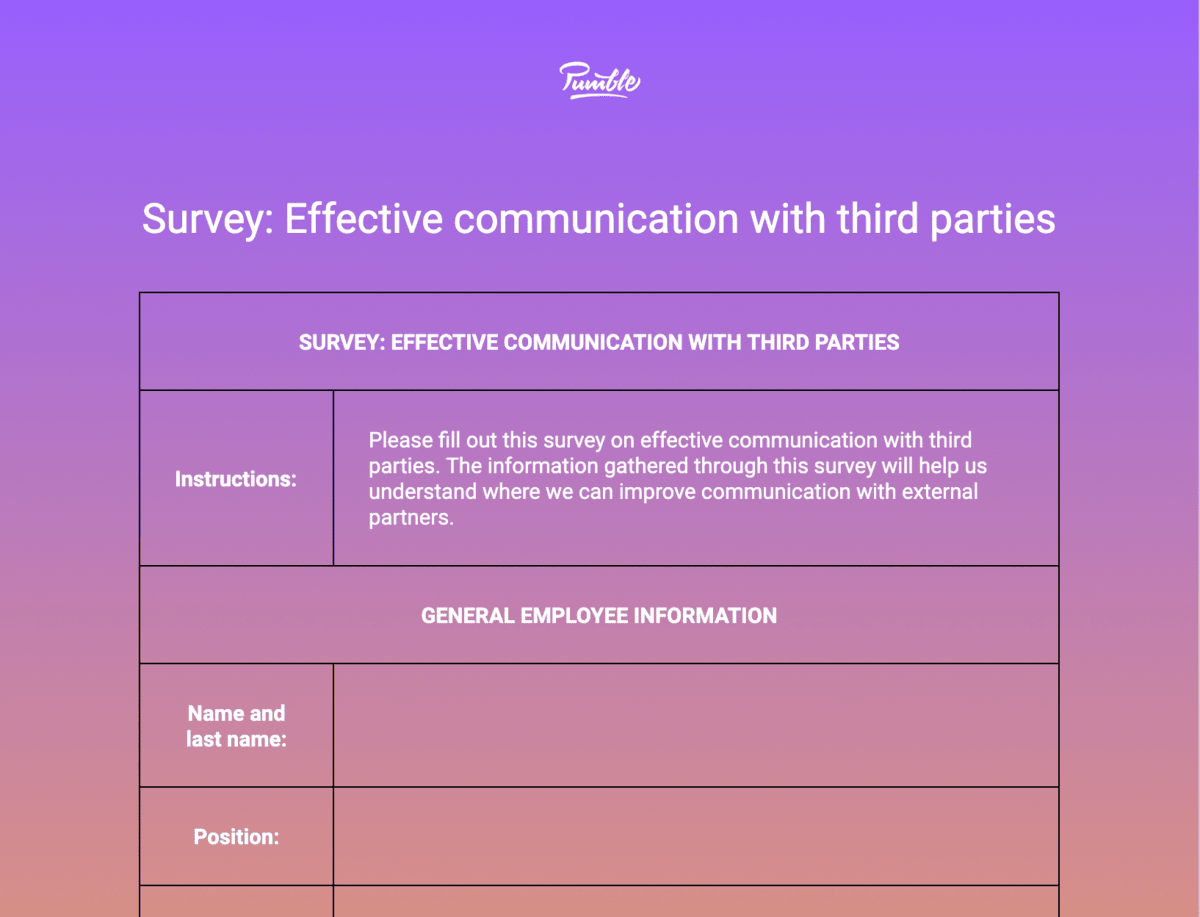
Download the Survey: Effective Communication with Third Parties
Tip #2: Foster clear communication
Once you’ve picked the right people from your company and gone over the initial steps of establishing a collaboration with a third party, maintaining regular communication is essential for the development of the project. Making sure that the employees in charge of the project and the client remain in constant contact will prove beneficial for both sides. And, thanks to the communication apps available, it’s easier than ever.
For example, Pumble, a team messaging app, helps teams communicate more quickly and exchange relevant information and files. While the app was designed to foster real-time communication among team members, its guest access feature allows non-company people to easily communicate with company employees.
This can be really helpful in remote and hybrid work settings, where asynchronous communication is the main mode of interaction.
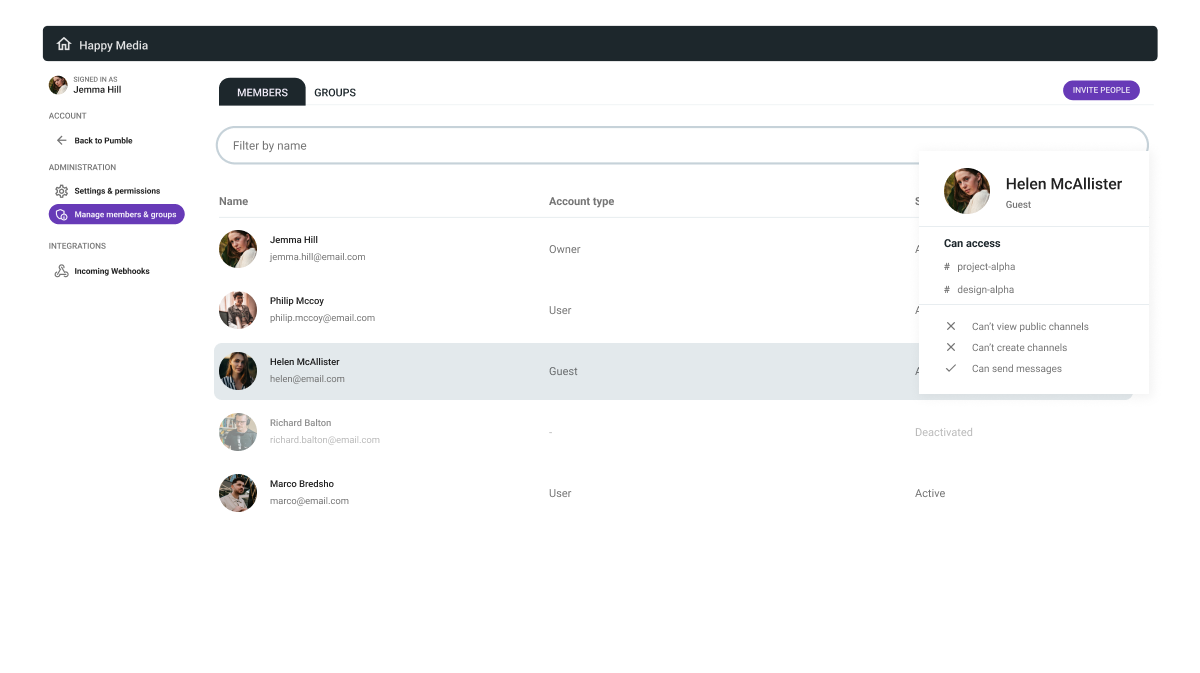
Furthermore, make sure you engage your external partners in various communication situations to encourage better communication and collaboration. Some of the ways to promote a healthy relationship between your company and external partners are:
- Regular video meetings,
- Feedback sessions, and
- Casual conversations.
Tip #3: Create a questionnaire to set explicit goals and expectations
Another important piece of advice is to set expectations and clear goals.
When collaborating with third parties, setting goals and expectations is twofold — both sides have to clearly say what their goals are and what they expect from this interaction.
This approach will save you valuable time, as honesty is a powerful business tool that can:
- Protect companies from terrible clients,
- Foster better external relationships, and
- Save you money.
To that end, you can create a general “Goals and expectations” questionnaire that both you and your associate can fill in. Make sure that your questions are clear and precise so that you collect the information relevant to your project. Use this as a reference guide throughout the project. This can help keep both parties on the same page and serve as a starting point in case of changes further down the road.
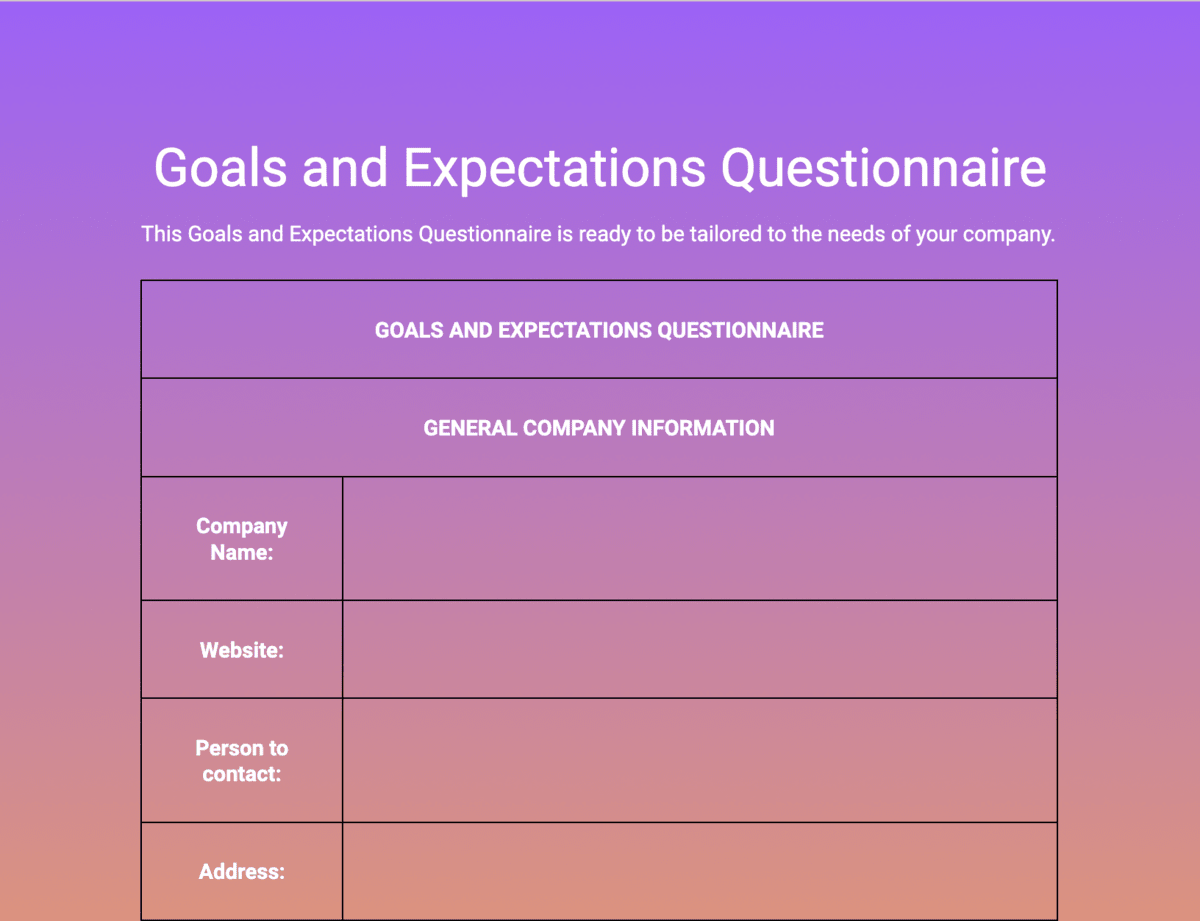
Download the Goals and Expectations Questionnaire
Tip #4: Determine needs and requirements
Once you agree to collaborate with an external partner and set goals and expectations, it’s essential that both sides clearly state their needs and requirements. Make sure to ask all the questions before you engage in a certain activity or project. Pay special attention to the requirements regarding the deadlines or budget.
Although many rely on oral communication even for important details and information, don’t be afraid of writing all relevant data down. Encourage employees to use a note-taking app or write important info down in their planners. Later on, they can rely on these notes whenever necessary to make sure things go according to plan.
Tip #5: Invest in maximum security
The amount of data that is being created, stored, and collected online is huge. This increases the risk of security threats and cyber-attacks. In turn, this can greatly affect communication, especially if you rely on modern communication technology to stay in touch with your outside associates.
One of the best ways to increase security is to invest money in proper security practices for your business. This may cover:
- A detailed data security strategy,
- Secure collaboration tools, and
- Regular safety checks.
Moreover, you can organize an online presentation on security management practices for your employees, clients, and external associates. Use this opportunity to educate them about current security risks and trends and to provide them with material for further reading.
Tip #6: Reinforce transparency
Communicating clearly is the basis of any healthy professional relationship — the same rule applies to third-party communication. The key to establishing long-term trustworthy relationships with outside parties is to be transparent in business, especially today when delivering quality products and services greatly depends on speed.
This can particularly be important for companies that offer products and services to users across the globe. A professional business is one that’s transparent, secure, and easy to reach. Nothing upsets an unsatisfied client like not getting proper information about a product or service they are interested in.
Even if your company doesn’t deal with users or customers, maintaining transparency will keep loyal partners close and attract new ones — a formula for success.
Here’s what you can do to keep communication breakdown at bay and foster transparency in the workplace:
- Organize a workshop on business jargon to educate your team about the use of appropriate business words and phrases,
- Help your team practice transparency in their speech, and
- Work on improving communication with outside associates.
💡 Pumble Pro Tip
To learn more about transparent communication, read our article on this topic:
Tip #7: Provide your customers with 24/7 customer service
If your company has a lot of users globally, having 24/7 customer service will help build your company’s reputation.
Hiring the best people trained to answer your customers’ questions timely and precisely will ensure professionalism and credibility. Modern customer service tools also help you streamline and manage customer interactions more effectively.
Tip #8: Monitor the process
Once you get past the clumsy beginnings, you should pay close attention to how the interaction with a third party progresses. While there’s no need for strict control and micromanaging, being a silent supervisor and checking in from time to time just to see if everything is going in a good direction is more than enough.
If your team encounters some disagreements in communicating with a third party at some point, fear not, as this is only normal. As long as all dilemmas and quarrels are resolved properly, there should be no major communication breakdowns. But, keeping an eye on signs of miscommunication will help dodge a bigger bullet later on.
Moreover, showing interest in what’s going on with external partners will be beneficial for the success of your business. Keeping your third parties involved and letting them know you are at their disposal will build trust and ensure a successful collaboration.
💡 Pumble Pro Tip
Be careful not to fall into a trap of micromanaging your team while supervising them. If you need some help in recognizing the signs of micromanagement, we have a whole blog post on that topic for you:
Tip #9: Review, reconsider, revise
Evaluating an already finished project is always a good idea. You can learn a lot from the mistakes you’ve made and think of constructive ways to solve these the next time around.
In a way, communicating and collaborating with contractors, vendors, and freelancers is always a unique project. Once finished, it deserves a proper review, especially if you’ve encountered some bumps along the road.
Although being an effective communicator isn’t easy, it’s also something that can be learned and improved. To examine communication and collaboration with your external partners, you can apply the 3R rule:
- Review the success rate: Take a close look at how successfully the collaboration ended and examine if both you and your outside associate are satisfied with the entire communication process.
- Reconsider previous steps: Think of what wasn’t working well and what can be improved for the following third-party collaborations. Ask yourself the following questions:
- Did you choose the right people for this?
- Did you and your third-party collaborator do your best to ensure effective communication and collaboration?
- Is there anything that you would do differently the next time?
- Revise the communication strategy: Having a good communication strategy is always useful. However, if it’s not functioning, it might be time for a change. Take your time to reevaluate your communication strategy and think of ways to upgrade it.
Tip #10: Use a follow-up sheet to get feedback from your external partners
Finally, when reviewing your collaboration and communication with third parties, you can use a follow-up questionnaire to get feedback from them. It enables you to check their level of satisfaction with the cooperation.
You can use this follow-up sheet as an additional asset to the previously mentioned 3R rule. Feel free to include the question about possible improvements in the future.
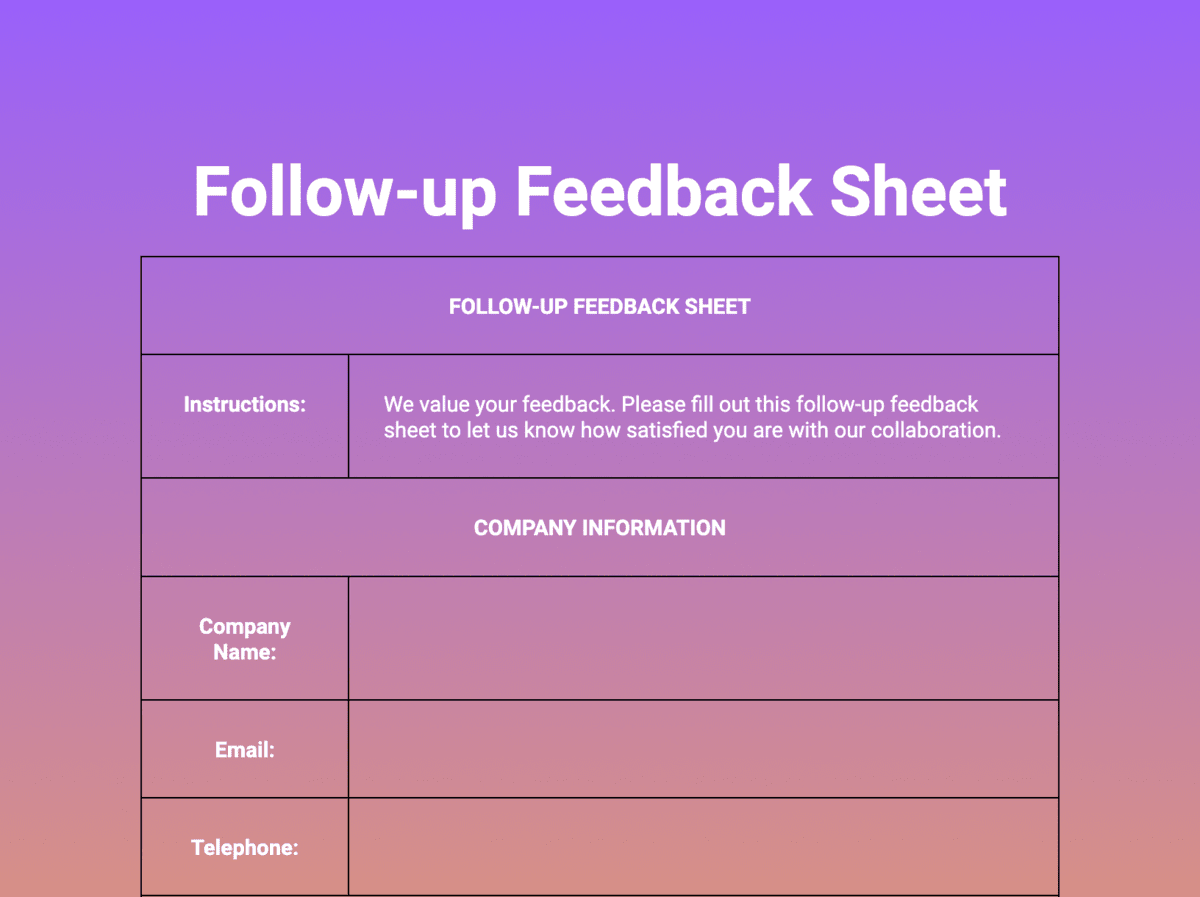
Download the Follow-Up Feedback Sheet
Pumble enables communication with third parties
As you have seen above, collaboration with third parties is very important for your business’ success.
Hence, it is crucial to be equipped with communication software such as Pumble, which lets you communicate with people outside your organization.
Thanks to Pumble’s guest access feature, you can invite professionals outside your team and give them permission to participate in:
- Channels,
- Video calls,
- Audio calls, and
- Threads.

Naturally, you will always be able to direct message your third-party associates or share files of unlimited size with them.
Even when you end your collaboration with a third party on Pumble, you can always go back to your conversations thanks to Pumble’s unlimited message history.
